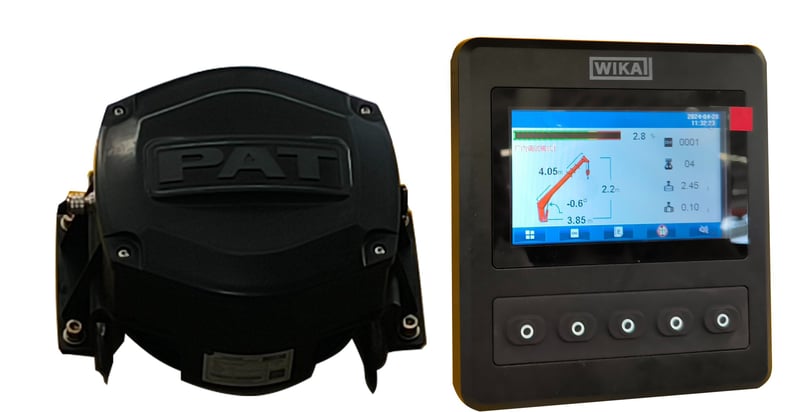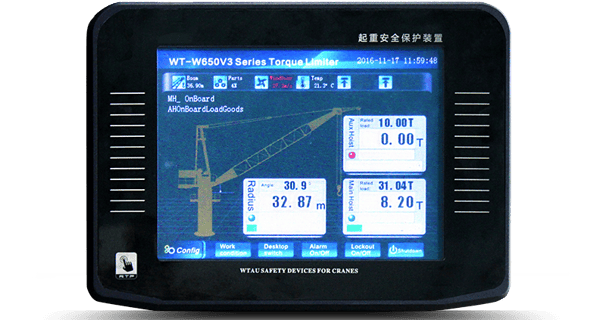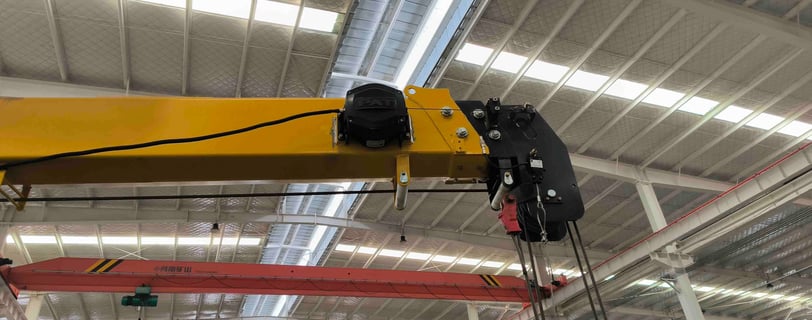What is a boom angle indicator for truck crane


Crane Load Moment Indicator (LMI) is an important safety device widely used in various types of cranes, such as truck-mounted cranes, tower cranes, mobile cranes, etc. The main purpose of the LMI is to ensure that the crane does not exceed its design capacity and safety limits by monitoring and controlling the crane's moment loads during operation, thus preventing overload accidents. range, thus preventing overload accidents.
Functionality
The main functions of the LMI include:
Load monitoring: real-time monitoring of the weight and position of the lifted load to ensure that the crane's maximum allowable moment is not exceeded.
Overload protection: If the maximum allowable moment is detected to have been exceeded, the system will sound an alarm and automatically stop the relevant crane operation to prevent damage to the crane due to overload.
Operator Assistance: Provides real-time information feedback to operators to help them better control the crane and improve the accuracy and efficiency of operations.
How it works?
The LMI measures and calculates the loader crane's moments. This is explained below.
The LMI system uses sensors to collect data. These sensors include:
Weight sensor: This is used to measure the weight of the object being lifted.
Angle sensor: measures the angle of the boom.
Length sensor: Measures the length of the boom.
Rotation sensor: Measures the angle of rotation.
Controller: The controller is the most important part of the LMI. It gets data from each sensor and uses it to calculate the current value. The controller usually uses a microprocessor or microcontroller to perform complex calculations and logical judgements.
Display and alarms: The LMI system has a display and alarms. The display shows the current moment value, boom angle, boom length and other info. If the calculated moment value is too high, the system gives a warning to prompt the operator to take action. Sometimes the system stops the crane from moving if it is too heavy.


Detailed Explanation
Load Monitoring
Weight Sensor: Weight sensors, usually installed on the hook, continuously monitor the weight of the lifted load. These sensors are high-precision pressure sensors capable of accurately measuring the weight of the load. By measuring the weight on the hook, we can determine the actual load on the crane.
Angle Sensor: Angle sensors monitor the angle of the boom relative to the ground. These sensors are high-precision inclinometers capable of accurately measuring the angle of the boom. Angle sensors help in calculating the effective length of the boom, as the effective length varies at different angles.
Length Sensor: Length sensors monitor the extension length of the boom. These sensors are linear displacement sensors capable of accurately measuring the length of the boom. The length sensor is important for calculating the moment because the length of the boom impacts the moment.
Rotation Sensor: Rotation sensors monitor the rotation angle of the boom. These sensors are rotary encoders capable of accurately measuring the rotation angle of the boom. The rotation angle is crucial for determining the effective length of the boom, which impacts the moment calculation.
Overload Protection
The LMI will warn if the current moment value gets too high. This often includes visual warnings, such as flashing lights or messages on the screen. It also includes audible warnings, like a buzzer. These warnings promptly notify the operator so they can take immediate action to avoid overloading.
The LMI can prevent the crane from overloading by stopping certain actions automatically. These actions include extending or rotating the boom too far. This automatic intervention is a key safety feature of the LMI system.
Operational Assistance
The LMI provides operators with real-time information on a display screen. This information includes the current value, boom angle, and length of the crane. This helps operators effectively control the crane. This real-time information enhances the operator’s precision and efficiency, reducing the likelihood of operational errors and improving overall productivity.
The LMI shows current data and gives advice to help operators make smart choices in complicated work settings. For example, the system can suggest the optimal boom angle and length for safe and efficient lifting.


What's the advantage of it?
Improved safety: The LMI monitors the load to prevent overloading, keeping both the crane and operator safe.
Improved Efficiency: Real-time information feedback helps operators more accurately control the crane, enhancing operational precision and efficiency.
Increased Operator Confidence: Operators can operate the crane with greater confidence, reducing stress and fatigue, and increasing job satisfaction.
conclusions
The Crane Load Moment Indicator (LMI) is a safety device. It ensures safe use of cranes by monitoring and controlling their weight capacity. The LMI system collects data from sensors and then calculates the current moment. If the moment is too significant, the LMI will warn you and stop the lift if necessary.
The LMI also records details of each lift, such as the maximum moment, average moment, and lift counts. This is useful for maintenance and management.
Real-time information helps operators control the crane better. This makes it safer and more efficient, and reduces maintenance costs. It also boosts operator confidence. The LMI is a valuable safety solution for crane owners and operators.


